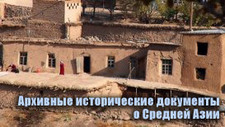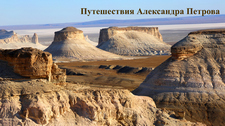Вы здесь
Research activities of N.N. Pantusov in Semirechye.
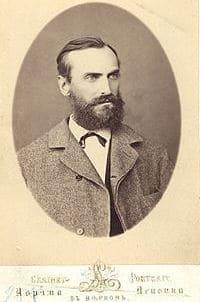
Visiting ancient monuments in Central Asia.
"The largest of these stones resembles in its figure a recumbent camel with a saddle...".
Pantusov N.N. "Aulia-tas". PTKLA, Year IV. Tashkent, 1899 p.68.
Ancient monuments of Central Asia.
The second half of the XIXth century - the beginning of the XXth century - a period of rapid development of scientific thought. A significant role in this process was played by scientific public organizations created both in the center - St. Petersburg, and on the periphery of the Russian Empire - Central Asia.
Many of them turned into important research organizations that systematically carried out excavations, research, restoration and protection of ancient monuments, and published the results of their work in special periodicals. One of such organizations was the Turkestan Circle of Archaeology Lovers, created in 1895 in the city of Tashkent.
The Turkestan Circle of Archaeology Lovers (TCAL) was a scientific and local history public organization that had been studying the monuments of the material culture of Central Asia for twenty years 1. From the first days until the last day of its existence, the outstanding Russian orientalist V.V. Bartold took part in its work.
The results of the research and reports of TCAL members on various monuments of the Turkestan region were published in the "Protocols of meetings and reports of members of the Turkestan Circle of Archaeology Lovers" published from 1896 to 1917.
The formation of this scientific society, whose members were archaeology lovers and local historians, contributed to the widespread development of research into the archaeological monuments of Kazakhstan and Central Asia 2. Among the ordinary members of TCAL there were also individual figures who stood out for their activity, one of whom was N.N. Pantusov. Nikolay Nikolaevich Pantusov (1849 – 1909) was a famous archaeologist, ethnographer, folklorist and geographer, who devoted his entire life to the study of Central Asia and Kazakhstan.
After graduating from the Oriental Faculty of St. Petersburg University in 1871, he was left to prepare for a professorship at the Department of Oriental History. However, the following year, 1872, he transferred to serve in the Turkestan region. N.N. Pantusov served in Tashkent, Fergana, Semirechye and Kulja and everywhere left traces of his observation 3.
Frequent trips by N.N. Pantusov across the territory of the Turkestan region as an official on special assignments for the Administration of the Semirechye Region contributed to the study of ancient monuments. On September 26, 1897, N.N. Pantusov visited the Kapchagay valley to study the Tamgaly-tas monument, located 25 miles northwest of the village of Ile, on the right bank of the Ili River.
During the inspection of the rocky bank of the river, many stones separated from the steep rock formations were discovered, eighteen of which had images 4. On the largest of these stones (height 73/4 arshins, diagonal width 41/2 fathoms) were carved images of three burkhans and an inscription on the right side below.
Below it are two more stones with single images of burkhans. On one of these stones (located to the left of the large stone) above the head of the burkhan are carved images of seven snakes 5. On seven separate stones located further, large and small inscriptions in the Kalmyk and Tibetan languages are carved.
N.N. Pantusov took photographs of the monument, which can be used to judge the layout, the distance between them and the approximate size of the total area. He gives a full description of 23 photographs, images and inscriptions. When describing the image with three burkhans, N.N. Pantusov gives the "self-designation" of the burkhans in Tibetan and Mongolian in transcription.
The burkhan located in the center is "Pagda jan rasik" (in Mongolian: niduber-utsukchi), on the left is the "buddha" Shakkkzhamani zhila (in Mongolian: otochi burkhan), on the right is the "buddha" Shak-chja-toba (in Mongolian: chitakchi-burkhan).
The inscriptions below indicate the name of the burkhans, below is a prayer spell (tarti) carved in Tibetan 6. The image of the "three burkhans" is also on three separate stones. The burkhan depicted on a separate stone is called in Tangut - "dorchzhi-menruk", and in Tibetan - "akshobi-burkhan", to the left of it is a prayer spell - tarti, below it is a spell in Mongolian repeated three times.
In the middle of the spell there is an inscription in Tibetan. On two stones there is an image of Lun-van (Lusunkhan) - the king of dragons. The main part of the images on other stones are inscriptions (spells in Mongolian and Tibetan languages) 7.
On September 29, 1897, N.N. Pantusov visited the Air-kezen valley and pass and the Taygak gorge in the Chulak Mountains. Petroglyphs were discovered in the Air-kezen tract, but due to the small number of images on the slabs, their photo fixation was not carried out.
Basically, the figures of marals and mountain goats were depicted on the planes 8. In the upper part of the northern slope of the Taygak gorge, numerous petroglyphs and inscriptions located on various rock blocks were examined. The plots were dominated by figures of various animals. All the inscriptions, mostly carved in Tibetan, are spells, they are read from left to right along a horizontal line.
Also on the road from the Tailak gorge towards Chulak-dzhide, near the wintering place of Makumbet, images of mountain goats were found 9. On October 6 of the same year, N.N. Pantusov surveyed the Kurtinskaya volost of the Vernensky district.
On the stones of the right rocky bank of the Kurtinsky Kapchagay and on separately scattered stones, images of marals and several inscriptions were found. Photographs were taken of four more or less preserved inscriptions. In the valley of Taskotan, on the left elevated bank of the Kurta River, three burial mounds were surveyed.
On one of the burial mounds, located in the middle, there were traces of an excavation 10. In this burial mound, in a pit, one broken stone woman and three whole ones were found. All of them were dug up and photographed. After examining the Taskotan tract, N.N. Pantusov went on October 7 to the Karaispe valley located in the Sarytokumov volost, where 30 burial mounds were discovered, 10 of which are located in the western part and 20 small burial mounds in the eastern part of the tract 11.
By the evening of the same day, N.N. Pantusov arrived at the Dzhalpak-tas tract. The next day, in the Kurtinskaya volost, northwest of the Dzhalpak-tas tract, he discovered a large stone with images of marals, deer, mountain goats, a man leading a camel, etc. carved into it.
Approximately 150 meters behind the stone, on a hill, there was a "collection of stones" oba (mounds), and 50 steps away from them in a hollow there was a destroyed large old grave (mound) 12. Then he examined the Dzhalpak-tas tract, where he discovered numerous graves (mounds) of large and small sizes.
Many of the mounds showed signs of excavation by robbers. N.N. Pantusov examined the dug-up mounds. The graves were lined with large perpendicular flat stones, some had small sections on the side, also lined with flat stones. In these sections there was one clay vessel each, like plates 13.
N.N. Pantusov also examined petroglyphs with images of mountain goats in the Kazy-bek, Kaly-bulak tracts; in the Kazy-bek, Utegen and Serek-tas tracts, numerous burial mounds made of stone were examined. In the Lepsinsky district, N.N. Pantusov examined the writings carved on large stones located on the left bank of the Baskan River.
The stones with inscriptions are large granite boulders, as tall as a man, rolled down from the surrounding mountains. There are more than ten of these stones in total. According to N.N. Pantusov's description: "The largest of these stones resembles a lying camel with a saddle ..." 14.
On the back of the "camel-shaped" stone there are images of goats and an inscription. On one of the two stones lying next to each other there is a carved Muslim inscription, and on the second there are five holes. The locals revere these stones as a shrine and call them "Aulie-tas" - a sacred stone.
N.N. Pantusov in his article gives several versions of the legend about Aulie-tas. According to the first version, the Prophet Muhammad himself visited this area, who sat on one of these stones, which is why this stone took the shape of a saddle, and according to another version, the prophet came to this place on a camel, and then the camel turned to stone, and the image of the lying camel remains to this day.
Near the "camel-shaped" stone there is a stone in the form of a small canopy, where, according to legend, stood the horse of the Prophet Muhammad - dul-dul 15. N.N. Pantusov's trip in July 1898 to the Altyn-Emel volost of the Kapalsky district was eventful and fruitful.
A significant number of previously unknown archaeological monuments were discovered in Altyn-Emel and adjacent volosts. N.N. Pantusov examined many burial mounds of various sizes located in the valley, on the right side of the Kugaly-Lugovoe (Kulan) road, in the Kesken-Terek River basin, and also 20 - 25 miles southwest of the Koksu village.
The burial mounds were located perpendicular to the mountains in the form of a continuous row, the embankments had a diameter of 5 sazhens at the base, a height of 3 sazhens 16. West of the village of Lugovoy, he examined several large burial mounds, and rock paintings and inscriptions were found in the gorge connecting the Kapalsky and Jarkentsky districts.
On July 29 of the same year, N.N. Pantusov surveyed the Baigozy and Ashybulak valleys. In the Baigozy valley, two large burial mounds and three small burial mounds located near the Kugal River were discovered and surveyed, and in the Ashybulak valley, a hewn stone pillar was found lying near an excavated grave.
In the Altyn-Emel volost, N.N. Pantusov also surveyed a long ditch located in the east-west direction. It originates from the Altyn-Emel Mountains, between the Altyn-Emel and Kuyakuz stations, and then goes to the Asan Mountains and the Koksu River.
The continuous ditch is quite large in places, and also has a continuous rampart on the northern side, the width of the ditch is 2 sazhens, the depth is 2 arshins. The question of who dug this ditch, when and for what purpose remained open. In the Mamyrkhan-bastau tract, N.N. Pantusov examined several graves (fences) and a stone woman (balbal tas).
The stone woman was broken and lay on its side. The stones scattered around the grave were covered with moss. According to N.N. Pantusov's assumption, these graves are more ancient than the previously examined graves. Between the Dosom and Kok-bastau tracts, a stone woman 17 was also discovered.
On July 19, 1899, N.N. Pantusov set off from the village of Dzhangyz-Agach to the Terekty gorge to photograph the inscriptions located on the steep cliffs. He took four photographs, three of individual stones and one of the general view.
On one of the stones was carved a figure of a mountain goat with huge horns. The inscriptions were translated by a scholar of Manchu origin, Dzhalang. On one of the stones was carved in Mongolian - "Dedu oron", which means "high place".
On the other two stones it is written: on the left side - in Mongolian "Ariya-balo" - the name of the eleven-faced Burkhan, Khonshim-Bodhisattva or Niduber-Uzhekchi, and on the right side - an untranslatable into Russian, mysterious prayer or spell in Mongolian "Om-ma-ni-bet-ma-hum" 18.
Higher in the mountains, during the examination of numerous boulders, petroglyphs were discovered. On the stones were carved images of mountain goats, hunters with bows, bogumarals and dogs. On the same day, N.N. Pantusov examined the right bank of the Koksu River and the Chibyndy Mountains located along this bank.
At six or seven versts from the village of Dzhangyz-Agacha, near two waterfalls on the Koksu River and at four versts from these waterfalls, slightly above the tributary of the Koksu River, Kyzyl-bulak, locations of petroglyphs were found.t the location of the drawings, located on the high bank of the river near the waterfall, figures of mountain goats were carved on separate rock blocks, and images of goats, marals, horses and hunters with dogs located in the valley between the Shybyndy Mountains and the Koksu River were carved on fifty separate boulders 19.
Thus, it can be summarized that the contribution of N.N. Pantusov to the study of the archaeological monuments of Semirechye is of great importance. He devoted his entire life to the study of monuments, carried out their on-site examination, photographic recording and described their location in detail, collected information about the existing monuments, legends associated with them.
He gave reports at meetings of the Turkestan Circle of Archaeology Lovers. The works of N.N. Pantusov are also valuable because many archaeological monuments that he studied have not survived to this day, destroyed either by natural disasters or by man.
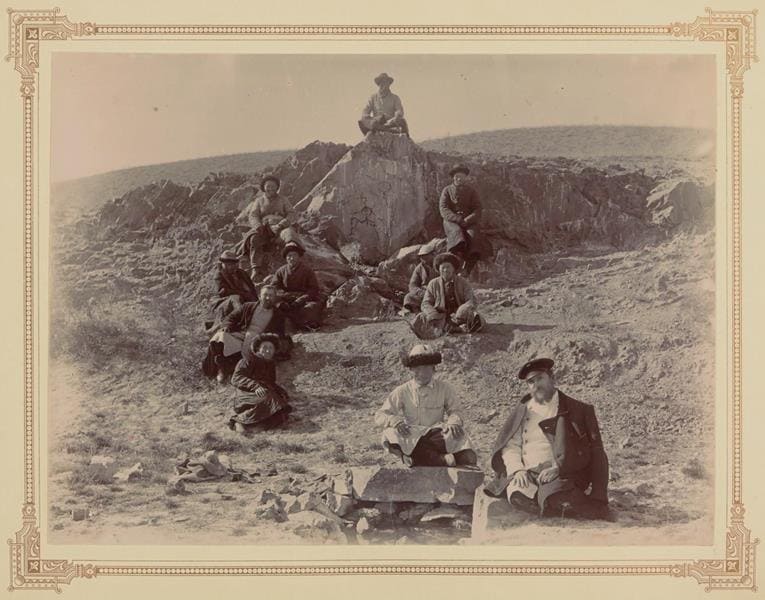
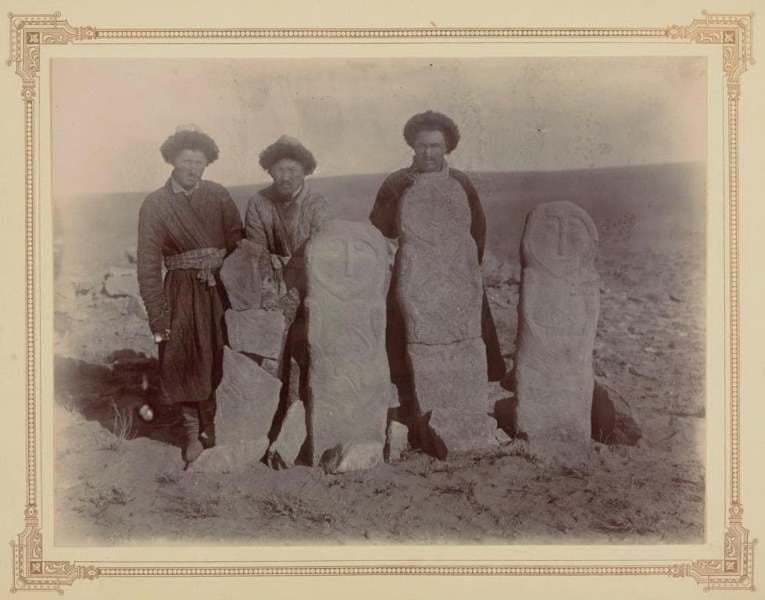
References:
1. Lunin B.V. "From the history of Russian oriental studies and archeology in Turkestan. Turkestan circle of archeology lovers (1895-1917)". Tashkent: Publication of the Academy of Sciences of the Uzbek SSR, 1958. p.10.
2. Turadilov M.U. "Archaeological activity of V.A. Kallaur". Abstract of the dissertation for the degree of candidate of historical sciences. Almaty, 2007. p.4.
3. Turkestan news, 1895, No.1362.
4. Pantusov N.N. "Tamgaly-tas". PTKLA, Year IV. - Tashkent, 1899. pp.53-55.
5. Ibid., p.56.
6. Pantusov N.N. "Description of photographic inscriptions taken by Mr. Pantusov in the area of "Tamgaly-tas". PTKLA, Year IV. - Tashkent, 1899 p.57.
7. Ibid., pp.57-59.
8. Pantusov N.N. "Air-kezen and Taygak". PTKLA, Year IV. - Tashkent, 1899 p.60.
9. Ibid., p.62.
10. Pantusov N.N. "Kurtynyn - Kapchagay and Dzhalpak-tas (Kurtinsky volost of Vernensky district)". PTKLA, Year IV. Tashkent, 1899 p.64.
11. Ibid., p.64.
12. Ibid., p.65-66
13. Ibid., p.66.
14. Pantusov N.N. "Aulia-tas". PTKLA, Year IV. Tashkent, 1899, p.68.
15. Ibid.
16. Pantusov N.N. "Altyn-Emel volost of Kapalsky district". PTKLA, Year V. Tashkent, 1900, p.20.
17. Ibid., p.22.
18. Pantusov N.N. "Terekty gorge and the Koksu river near the settlement of Dzhangyz-Agach of Kapalsky district". PTKLA, Year V. Tashkent, 1900, p.26.
19. Ibid., p.27.
Authority:
Bakhtybaev M.M. "Research activities of N.N. Pantusov in Semirechye."
International Kazakh-Turkish University named after H.A. Yasawi.
https://www.rusnauka.com/28_NIOXXI_2008/Istoria/35692.doc.htm.





